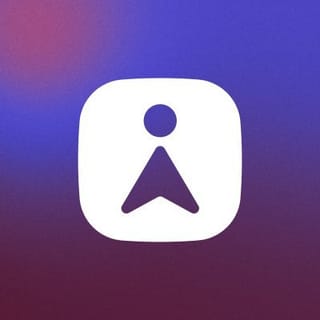
The most strategic method of nurturing leads and building pipeline is to use sales email sequences. Email sequences allow your sales team to personalize outreach communications, make them targeted, and get prospects into the sales funnel faster.
To reach your sales team's intended goal, your salespeople will need to use an effective email sequence with a solid strategy.
How do email sequences work?
A sales email sequence is a pre-planned series of top-of-funnel emails that salespeople send to their prospects in an effort to guide them into the sales process.
The emails should be customized to address pain points, fulfill specific needs, or engage with the prospect's interests.
The emails your team sends should be captivating and relevant — otherwise, the wrong email can lead to the recipient becoming uninterested.
The ultimate goal is to create a relationship with the prospect built on trust and for them to take action on your CTA (call to action) and get them into a sales process. With their interest piqued, they will decide they're ready to engage with you, and your CTA will earn you a new opportunity.
Providing them the ability to take the next step and schedule a meeting is imperative. An email sequence without a call to action could make all of your efforts for nothing.
What are the key parts of sales cadences?
Each component of your email campaign serves a purpose — for example, subject lines are crucial to your open rates, and CTAs are crucial for conversion rates.
Let's break down the components of an email to see how they can be enhanced:
Engaging subject lines
Before your prospect even clicks on your first email, they will read your subject line. New leads need a reason to open your email. Your subject line should be crafted with care to create a sense of intrigue and speak to the recipient's needs.
Clear and concise messaging
Once the recipient has opened your email you'll want them to know their time is respected. Copywriting for an email should focus on clarity and concision, and the customer shouldn't have misunderstandings about your product or message.
Deliver your offer, whether it's a limited-time deal, the release of new features, or a re-engagement of inactive leads with as few words as possible. Let the recipient know what you've got going on, what they're missing out on, or how you can best help them.
Your value proposition
Every email in your sequence needs to deliver a message about the value of your product or service. Tell them how your company solves the prospect's specific problems, improves their life or business, and is a beneficial product or service.
CTA (call to action)
Every email in your sequence needs to include a call to action. Let the prospect know the action you’re expecting them to take and lay that request out clearly.
Personalized touch
Personalization in emails leads to higher engagement. Automation can help you easily personalize emails by generating the core content of the email, leaving you to fill in the recipient's name and the specific product or service they may have engaged with.
Frequency and timing
Emails sent too quickly and too frequently might overwhelm your prospect, but waiting too long can lead to them dropping out of the funnel.
For an ideal timeframe, send your introductory email, then wait a few days before sending a follow-up email.
What are some email sequence templates?
Whether lead nurturing, onboarding, or looking to cross-sell or upsell, you can build email sequence templates to save time and streamline the process.
Let’s look at some sales email sequence examples. With a few changes, you can make these templates your own and rework them to suit your desired strategy.
Introductory email
Your introductory email is the very first contact you make with a prospect. You'll want to familiarize your potential customer with you, your company, and your product or service. Focus on the prospect's needs and remember to keep it concise, clear, and personalized.
Example:
Subject: Helping [prospect's company] Streamline [specific issue or process]
Hello [prospect's name],
I've noticed that [prospect's company] is [relevant detail about their business that they may need help with]. [Your company] specializes in helping businesses like yours [mention the benefit your company provides to businesses like theirs].
I'd love to speak with you about how [prospect's company] can achieve [specific goal]. Are you available for a quick call?
Best regards,
[Your name]
[Your contact information]
Follow-up email
Send a follow-up to your email if a prospect hasn't responded to your first email. No reply doesn't mean that they're not interested — it could mean they're busy or forgot. A follow-up email gives you the opportunity to re-state your company's value proposition.
Example:
Subject: Quick Question, [prospect's name]
Hello [prospect's name],
I wanted to send you a follow up in regards to my previous email about [your value proposition]. I'm sure you must be busy, and I don't want to waste your time. I believe [your company] can help [prospect's company] with [specific goal].
Would you be up for a discussion about exploring this further?
Best regards,
[Your name]
[Your contact information]
Value-add email
One way to entice your recipient is by providing them insight into the value of what you have to offer. The best way to do this is to provide them with something without asking for anything in return. Industry reports can work wonders in this type of email.
Example:
Subject: The power of [relevant topic] for [prospect's company]
Hello [prospect's name],
I wanted to share a [blog post, or industry report]. It shows [mention the specific benefit of the case study or post contents] and how a company like yours has benefited greatly from [product or service your company offers].
You can see the [case study/report] here: [link]
I'd love to discuss how [your company] can assist [prospect's company] in reaching those same goals. Let me know if you have time to talk.
Best regards,
[Your name]
[Your contact information]
Final attempt email
If your recipient isn't responding to any of your emails in the sequence, send them the final attempt email. Your final email should convey any sense of urgency on expiring offers and that this will be your final attempt to reach them.
Example:
Subject line: [Prospect's name], Last Attempt
Hello [prospect's name],
I've been wanting to reach out to you about how [your company] could help [prospect's company] with [specific goal]. Since I haven't heard back I assume that this isn't a priority for you right now.
I wanted to let you know that if you decide to explore this opportunity in the future, please don't hesitate to reach out. Wishing you the best and hoping we can connect in the future.
Thank you,
[Your name]
[Your contact information]
What are some best practices for sales email sequences?
To see results in your email sequence efforts, you'll want to review your metrics. You'll also want to take care of the planning that goes into contacting your prospects.
Here are a few best practices that can help you optimize your efforts:
Research your prospect
When creating an email sequence, consider the struggles of your recipients. Identify their pain points and relate their needs to your business.
Testing and optimizing
A/B testing can allow you to see what versions of emails work best. Swap out subject lines to see which get more opens, change out your value propositions to see which ones resonate more, and always test the components. Use metrics to identify important details on your email open rates, click-through rates, and engagement.
Persistence and respect
In sales, you need to be both persistent and respectful. Don't bombard them with emails — evenly space out your contacts and set a limit.
Put it together
Combine all of the aspects of email sequences that we've laid out to increase your sales and see more opportunities. Managing those deals once you leave the structured sequence, however, is where the real challenge starts.
Superhuman is a blazingly fast email experience designed for high-performing sales teams. Superhuman saves teams over 10 million hours every year. Imagine what your team could do with an extra selling month each year. Get started today to move faster and collaborate more effectively.




